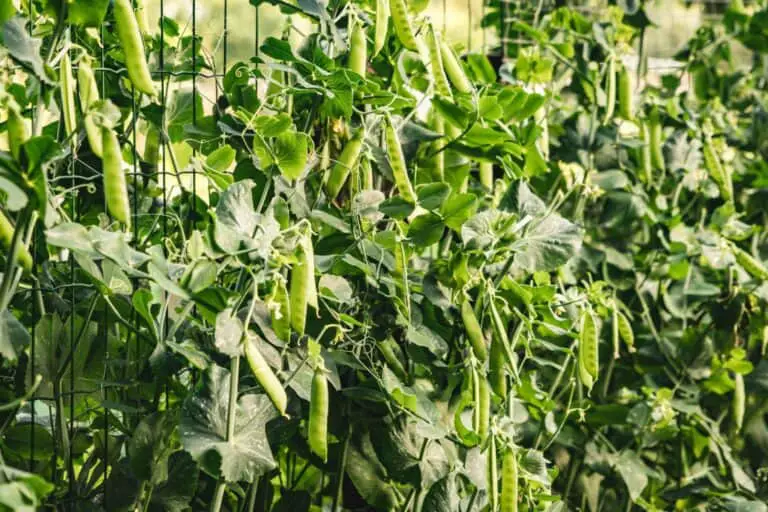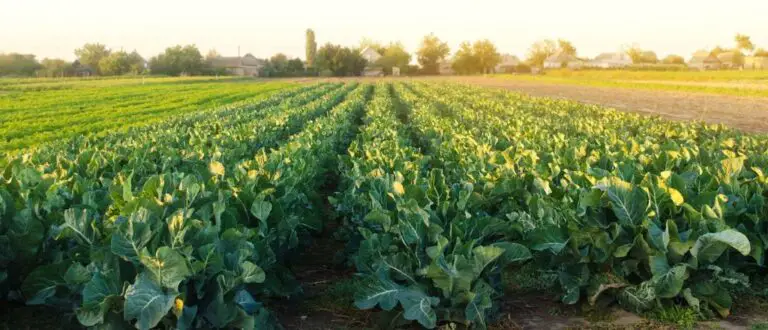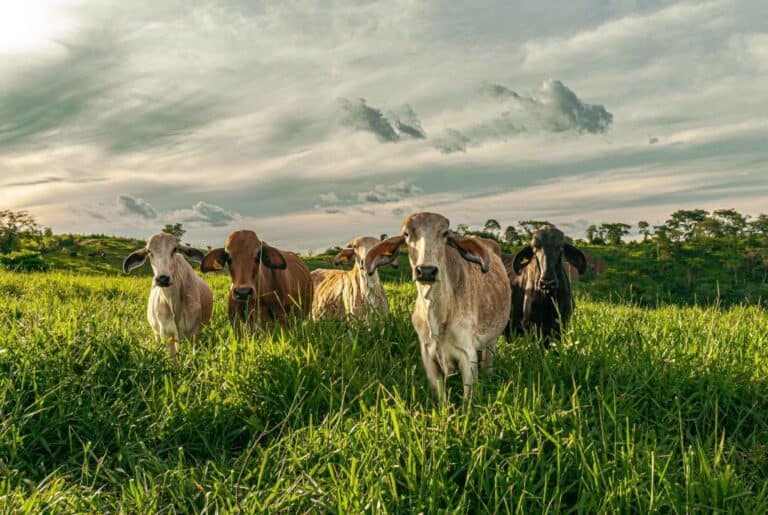Subsistence Farming Meaning, Characteristics, and Examples

It’s easy to ignore the traditional method of subsistence farming in a world where modern agricultural techniques and advanced technology rule. This age-old practice, however, still holds relevance for many communities around the globe.
Subsistence farming refers to a self-sufficient agricultural system where farmers produce only enough food and resources to meet the needs of their own families or local communities.
In this article, we will embark on a journey to explore the meaning, characteristics, and examples of subsistence farming. Join us as we unveil the fascinating world of subsistence farmers, their intimate connection to the land, and the unique challenges they face.
Get ready to gain insights into a way of life that intertwines self-reliance, cultural heritage, and the delicate balance between humans and the earth.
What is Subsistence Farming?
Definition of Subsistence Farming
Subsistence farming, also known as subsistence agriculture, is a farming method primarily focused on producing food and resources for immediate consumption.
Unlike commercial farming, which involves large-scale production for profit, subsistence farming centers around sustaining one’s own family or community. Surplus production, if any, is typically limited or absent.
This farming practice has been the backbone of rural economies throughout history and still plays a significant role in certain regions today.
Historical Background of Subsistence Farming
Subsistence farming has deep historical roots, originating in ancient agricultural practices. It has been prevalent in traditional and indigenous societies, where it formed the backbone of local economies.
Over time, subsistence farming has evolved in response to changing socio-economic and environmental conditions, incorporating new techniques and adapting to various regions’ specific needs.
Characteristics of Subsistence Farming
Subsistence farming is characterized by several distinct features that set it apart from other farming methods. These characteristics highlight the self-sufficiency and sustainable nature of subsistence agriculture:
- Small-scale production: Individual families or small communities typically cultivate small plots of land for subsistence farming. The size of the farm is limited to what is necessary to support their needs, rather than aiming for surplus production.
- Diverse crops and livestock: Subsistence farmers rely on a diverse range of crops and livestock to ensure a balanced diet and reduce risks associated with crop failure or disease. This diversity helps to maintain the nutritional requirements of the household or community.
- Traditional farming techniques: Subsistence farmers often employ traditional farming rather than modern farming techniques passed down through generations. These techniques are often adapted to suit the local climate, soil conditions, and available resources. Organic and sustainable practices are typically favored.
- Limited use of external inputs: Subsistence farming relies heavily on local resources and minimizes the use of external inputs such as chemical fertilizers, pesticides, or machinery. Farmers tend to use traditional methods of soil fertility enhancement and pest control.
- Family labor: Subsistence farming is predominantly a family affair, with household members actively involved in all aspects of farming, from planting and tending crops to caring for livestock. It serves as a way to reinforce family bonds and teach agricultural skills to the next generation.
- Close connection to nature: Subsistence farmers or cultivators have a profound connection to the land they cultivate. They depend on the natural environment and weather patterns, observing and adapting to nature’s cycles to ensure successful harvests.
Importance of Subsistence Farming

Subsistence farming plays a crucial role in providing food security and supporting local communities, especially in regions where access to markets and modern infrastructure is limited. Let’s explore some key reasons why subsistence farming is important:
- Food security: Subsistence farming ensures that families and communities have access to a consistent food supply. By producing their own food, subsistence farmers reduce their dependence on external sources and mitigate the risk of food shortages.
- Preservation of cultural heritage: Subsistence farming practices are often deeply rooted in cultural traditions and customs. They contribute to the preservation of indigenous knowledge, sustainable land management practices, and traditional agricultural techniques, passing them on to future generations.
- Environmental sustainability: Subsistence farmers typically have a deep understanding of their local ecosystems and rely on organic farming methods. By minimizing the use of chemicals and artificial inputs, subsistence farming promotes environmental sustainability, biodiversity conservation, and the preservation of natural resources.
- Community resilience: Subsistence farming fosters strong community bonds and resilience. When families and communities work together to produce their own food, they develop a sense of interdependence, mutual support, and collective responsibility.
- Reduction of rural poverty: Subsistence farming provides livelihood opportunities for rural populations, helping to alleviate poverty in remote areas where alternative income sources may be limited. It enables self-sufficiency and reduces the need for external aid or resources.
Despite its importance, subsistence farming faces numerous challenges in today’s world. Rapid urbanization, climate change, limited access to markets and credit, and the allure of modern lifestyles have led to a decline in subsistence farming practices in some regions.
In conclusion, subsistence farming embodies the essence of self-sufficiency and sustainability. It continues to be a vital source of food and livelihood for many communities worldwide, preserving cultural heritage and fostering resilience. Understanding and appreciating subsistence farming can inspire us to support and promote the sustainable use of natural resources, while also recognizing the inherent value and wisdom embedded in traditional agricultural practices.
Subsistence Farming Practices and Techniques
Subsistence farmers utilize various agricultural practices to ensure food production. These include crop rotation, intercropping, multiple cropping, and agroforestry, which maximize land productivity and reduce the risk of crop failure. Additionally, subsistence farmers often engage in livestock rearing, fishing, and hunting to supplement their food sources, creating a diverse and resilient system.
The table below highlights some common subsistence farming practices and techniques:
| Subsistence Farming Practices | Description |
| Crop rotation | Rotating different crops to maintain soil fertility and prevent pests |
| Intercropping | Planting multiple crops in the same area for efficient land use |
| Agroforestry | Combining trees with crops for ecological and economic benefits |
| Livestock rearing | Raising animals like cattle, goats, or chickens for food and labor |
| Fishing and hunting | Catching fish or game to supplement the diet |
Regional Examples of Subsistence Farming
Subsistence farming can be found in various parts of the world, particularly in developing countries or remote regions with limited access to modern infrastructure. Let’s take a look at some examples of subsistence farming practices:
| Region | Example of Subsistence Farming |
| South America | Slash-and-burn agriculture: Indigenous communities in the Amazon rainforest clear small areas of land by cutting down vegetation and burning it. The ash from the burned vegetation provides nutrient-rich soil for farming, but the plots are abandoned after a few years. |
| Africa | Shifting cultivation: In parts of sub-Saharan Africa, farmers practice shifting cultivation. They clear small plots of land, cultivate them for a few years until soil fertility declines, and then move on to new plots, allowing the land to regenerate over time. |
| Asia | Rice terrace farming: In mountainous regions like the Philippines, Indonesia, and Vietnam, rice terrace farming is a common subsistence farming practice. Farmers construct terraces on the steep slopes of mountains, creating flat areas for planting rice. These terraces allow for efficient water management and prevent soil erosion. |
| South America | Slash-and-burn agriculture: Indigenous communities in the Amazon rainforest clear small areas of land by cutting down vegetation and burning it. The ash from the burned vegetation provides nutrient-rich soil for farming, but the plots are abandoned after a few years. |
| Africa | Shifting cultivation: In parts of sub-Saharan Africa, farmers practice shifting cultivation. They clear small plots of land, cultivate them for a few years until soil fertility declines, and then move on to new plots, allowing the land to regenerate over time. |
| Asia | Rice terrace farming: In mountainous regions like the Philippines, Indonesia, and Vietnam, rice terrace farming is a common subsistence farming practice. Farmers construct terraces on the steep slopes of mountains, creating flat areas for planting rice. These terraces allow for efficient water management and prevent soil erosion. |
| Pacific Islands | Permaculture gardens: Indigenous communities in the Pacific Islands practice permaculture, where different crops, trees, and livestock are strategically planted together to create a self-sustaining ecosystem. This ensures a variety of food sources and utilizes natural resources efficiently. |
These examples demonstrate the diverse approaches to subsistence farming in different regions, highlighting the adaptability and resourcefulness of subsistence farmers.
Conclusion
Subsistence farming, often practiced in traditional and indigenous societies, is a self-sufficient agricultural practice aimed at producing enough food for the farmer’s family and community. Unlike commercial farming, which focuses on surplus production for profit, subsistence farming revolves around meeting immediate consumption needs. In this article, we will explore the meaning, characteristics, and examples of subsistence farming, shedding light on its historical background, regional variations, challenges, and future prospects.
FAQs
Is subsistence farming practiced in developed countries?
Subsistence farming is more common in developing countries, where traditional agricultural practices persist. However, small-scale subsistence farming can also be found in certain rural areas of developed countries, particularly among marginalized communities.
How does subsistence farming differ from industrial agriculture?
Subsistence farming focuses on producing enough food for immediate consumption within a small-scale, self-sufficient system. Industrial agriculture, on the other hand, prioritizes large-scale production for commercial purposes, utilizing advanced technologies and intensive inputs.
Can subsistence farming provide enough food for a growing population?
Subsistence farming alone may struggle to meet the demands of a rapidly growing population. However, when complemented with sustainable agricultural practices, access to markets, and supportive policies, it can contribute significantly to local food security.
Are there any government programs to support subsistence farmers?
Many governments and organizations implement programs to support subsistence farmers, including providing access to credit, agricultural extension services, infrastructure development, and market linkages. These initiatives aim to enhance productivity, income, and overall well-being of subsistence farming communities.
What are the social and cultural aspects associated with subsistence farming?
Subsistence farming is deeply intertwined with local cultures, traditions, and community dynamics. It often fosters strong social ties within farming communities, promotes knowledge sharing, and preserves indigenous agricultural practices and biodiversity.
How does climate change impact subsistence farming?
Climate change poses significant challenges to subsistence farming, including unpredictable weather patterns, increased frequency of extreme events, and changing disease and pest dynamics. Adaptation strategies, such as crop diversification and water management, become crucial for farmers’ resilience.
What are the potential solutions for addressing the challenges of subsistence farming?
Addressing the challenges of subsistence farming requires a multi-faceted approach. This includes improving access to resources, investing in sustainable farming practices, promoting market integration, supporting farmer cooperatives, and strengthening policy frameworks that prioritize small-scale agriculture.






